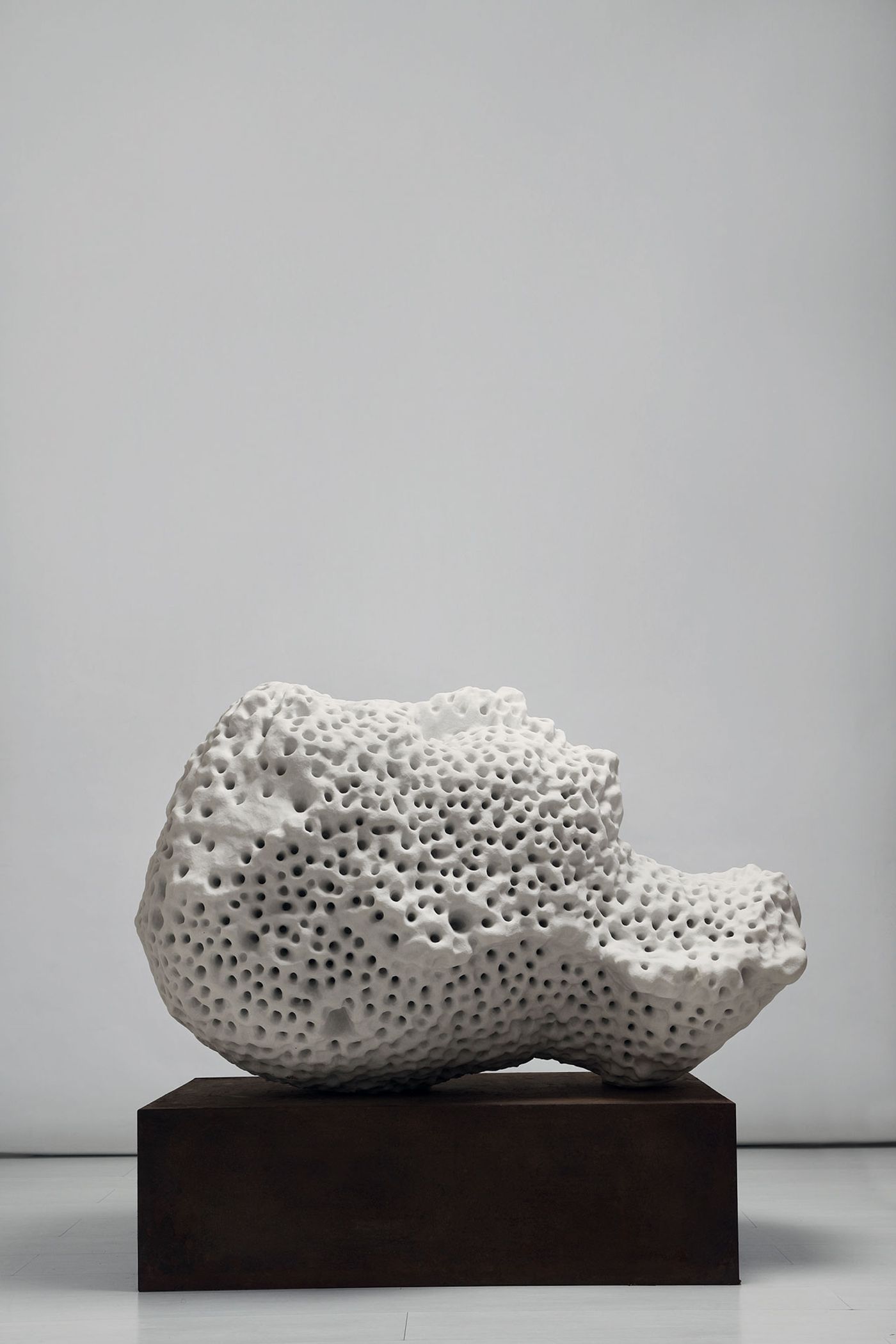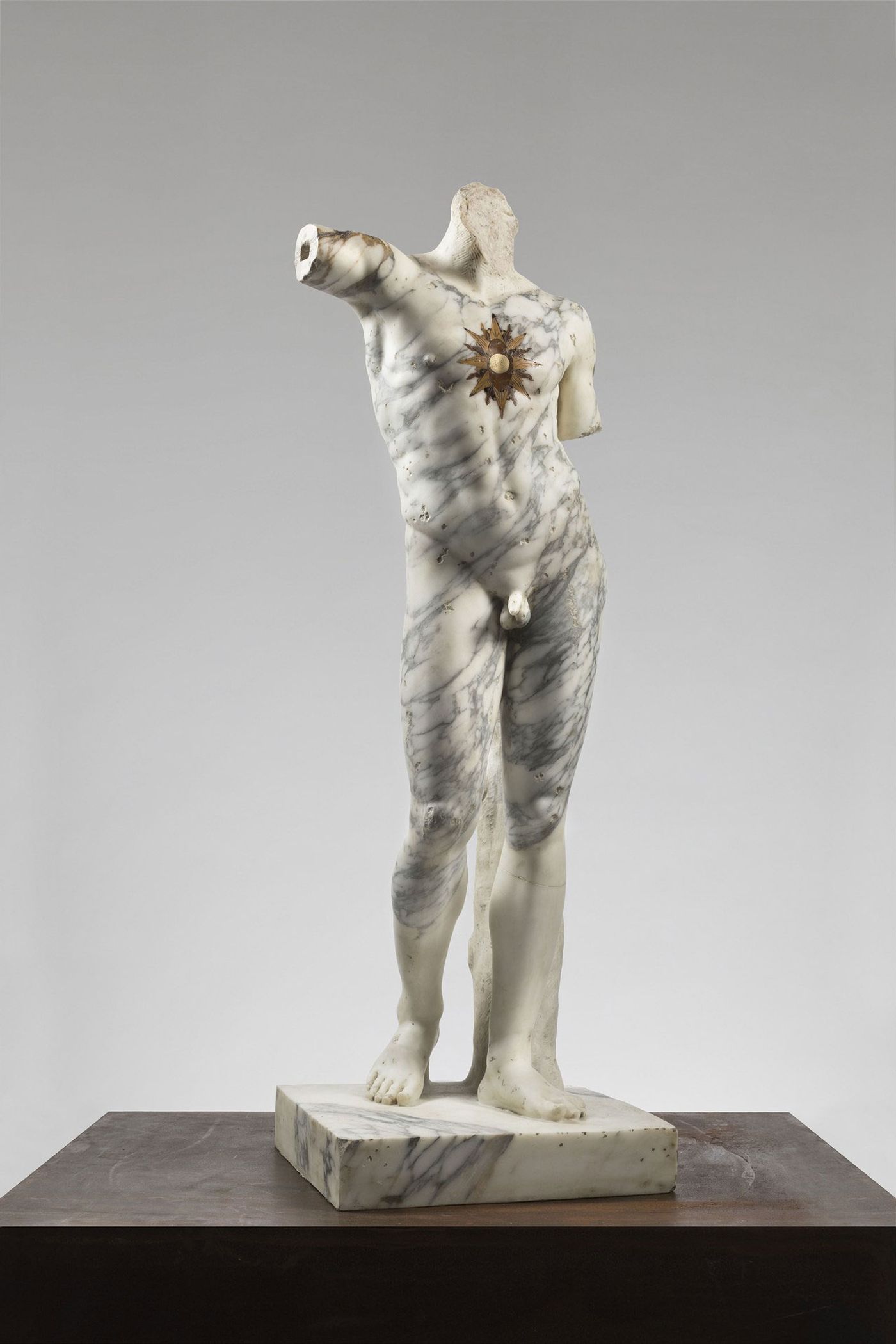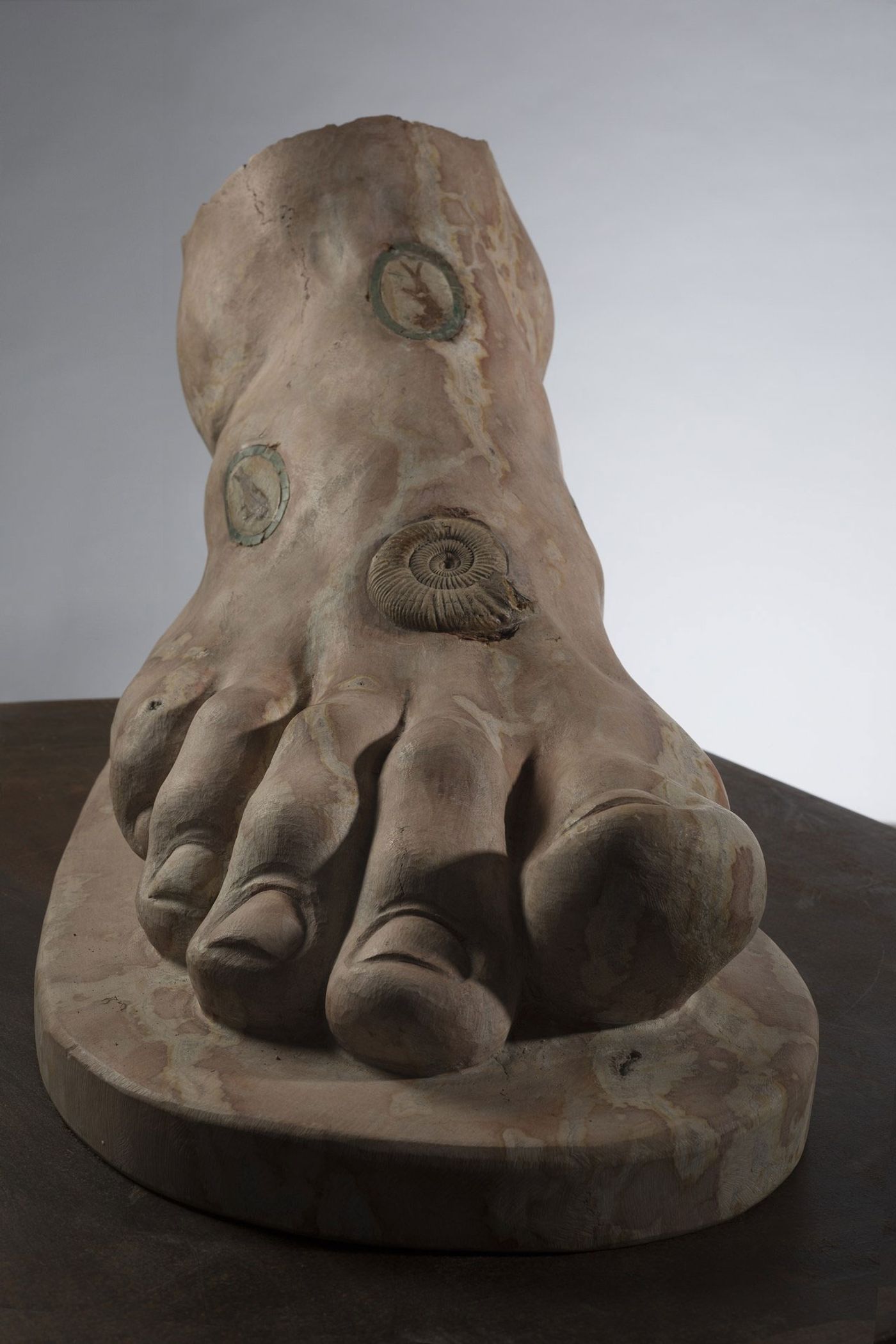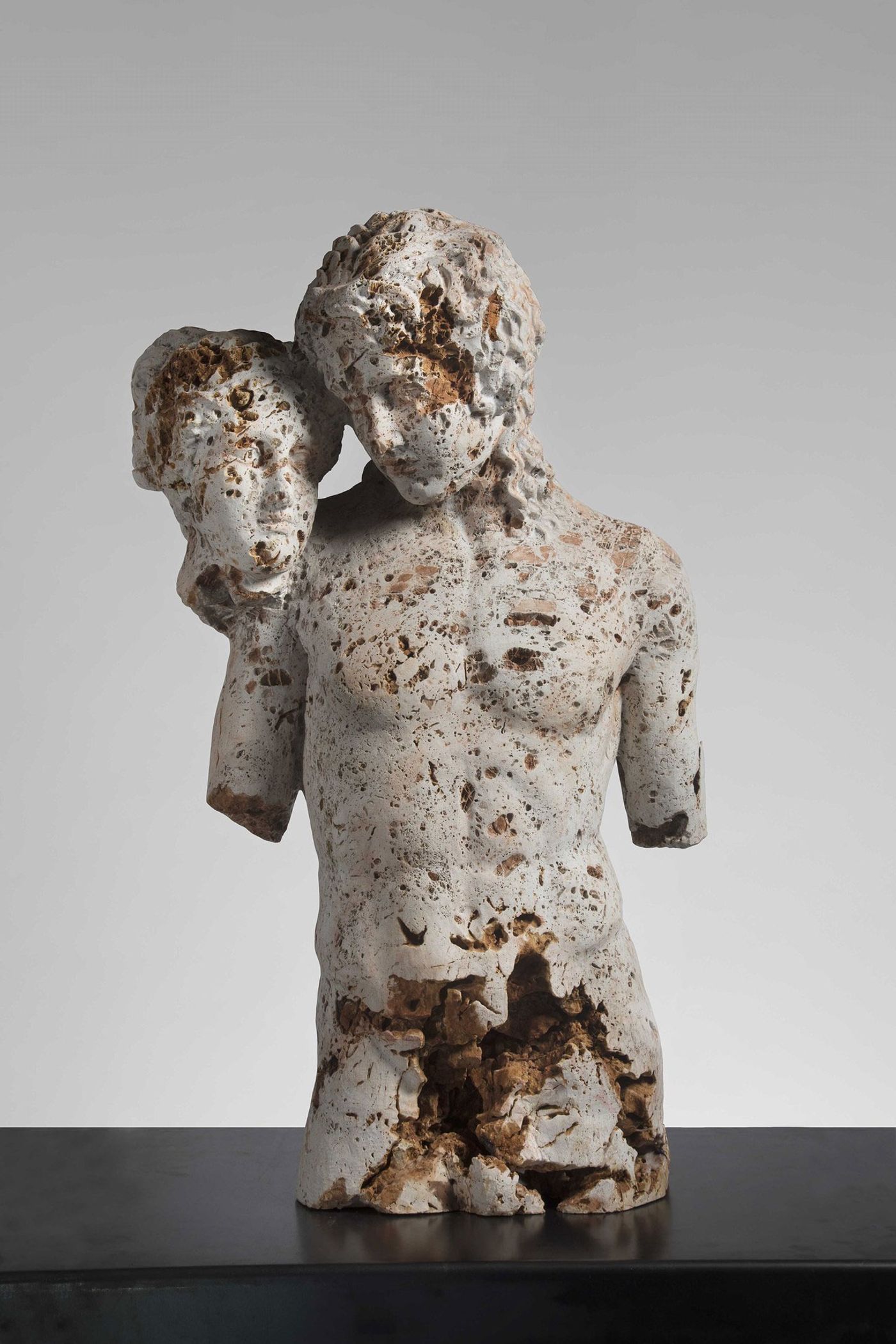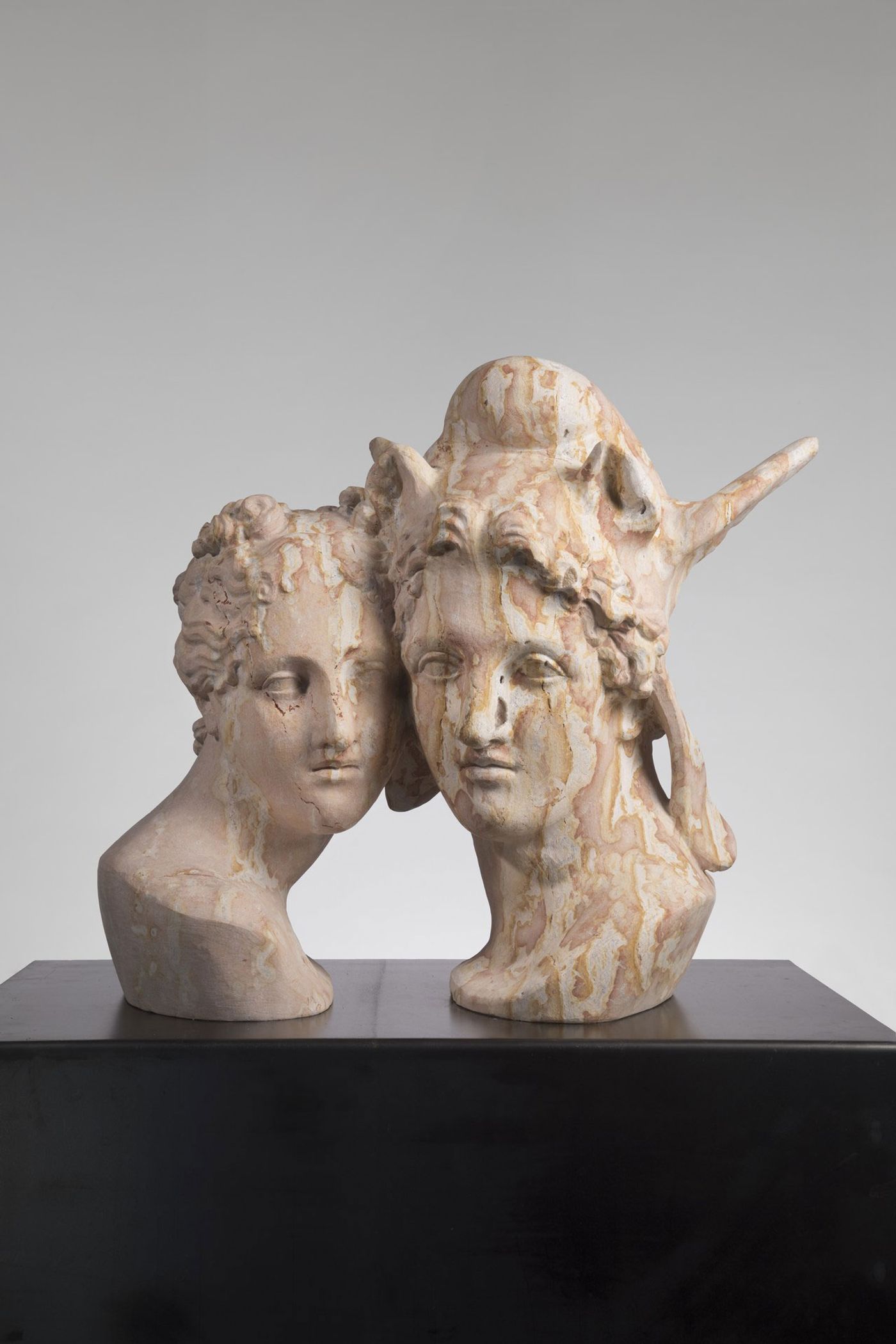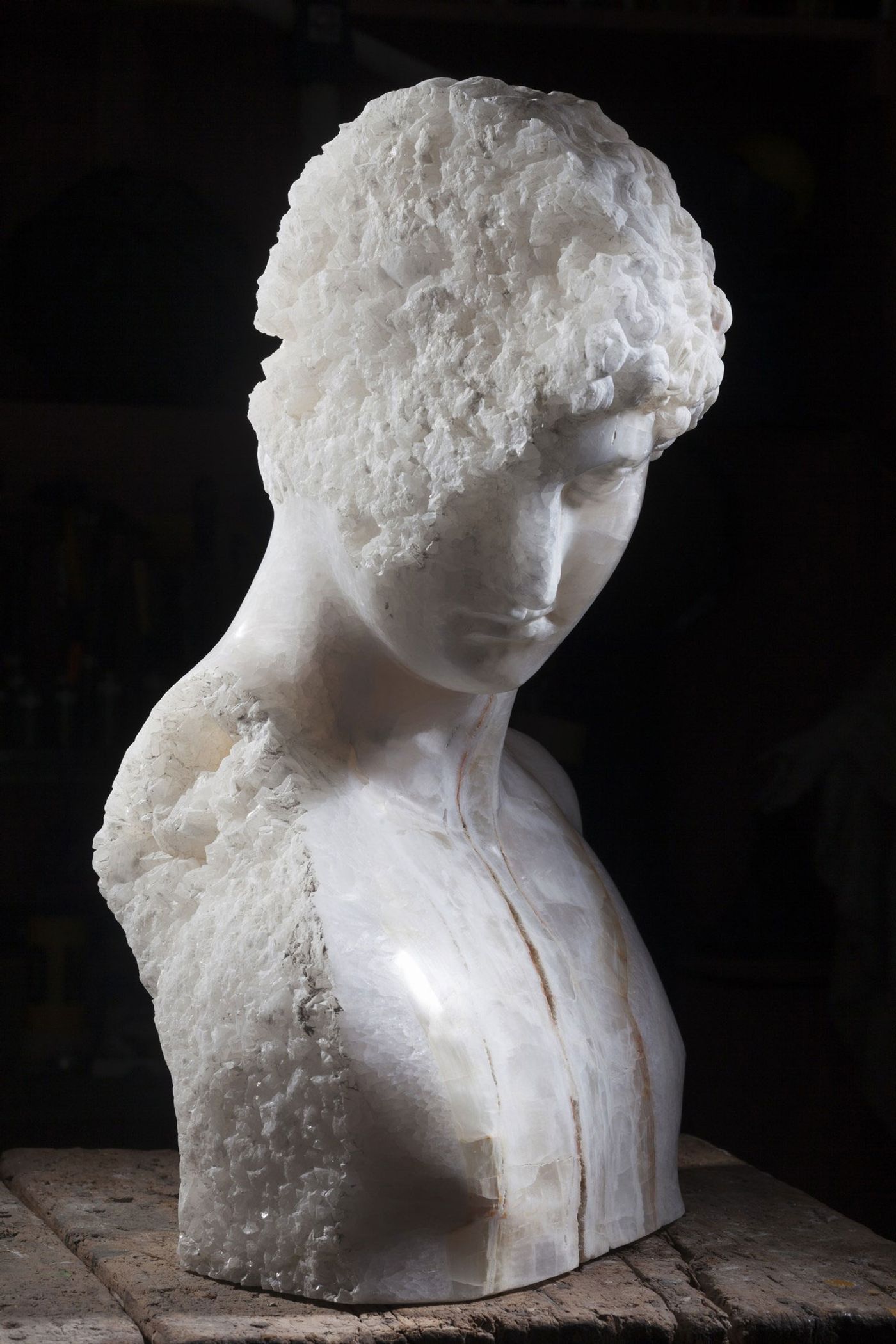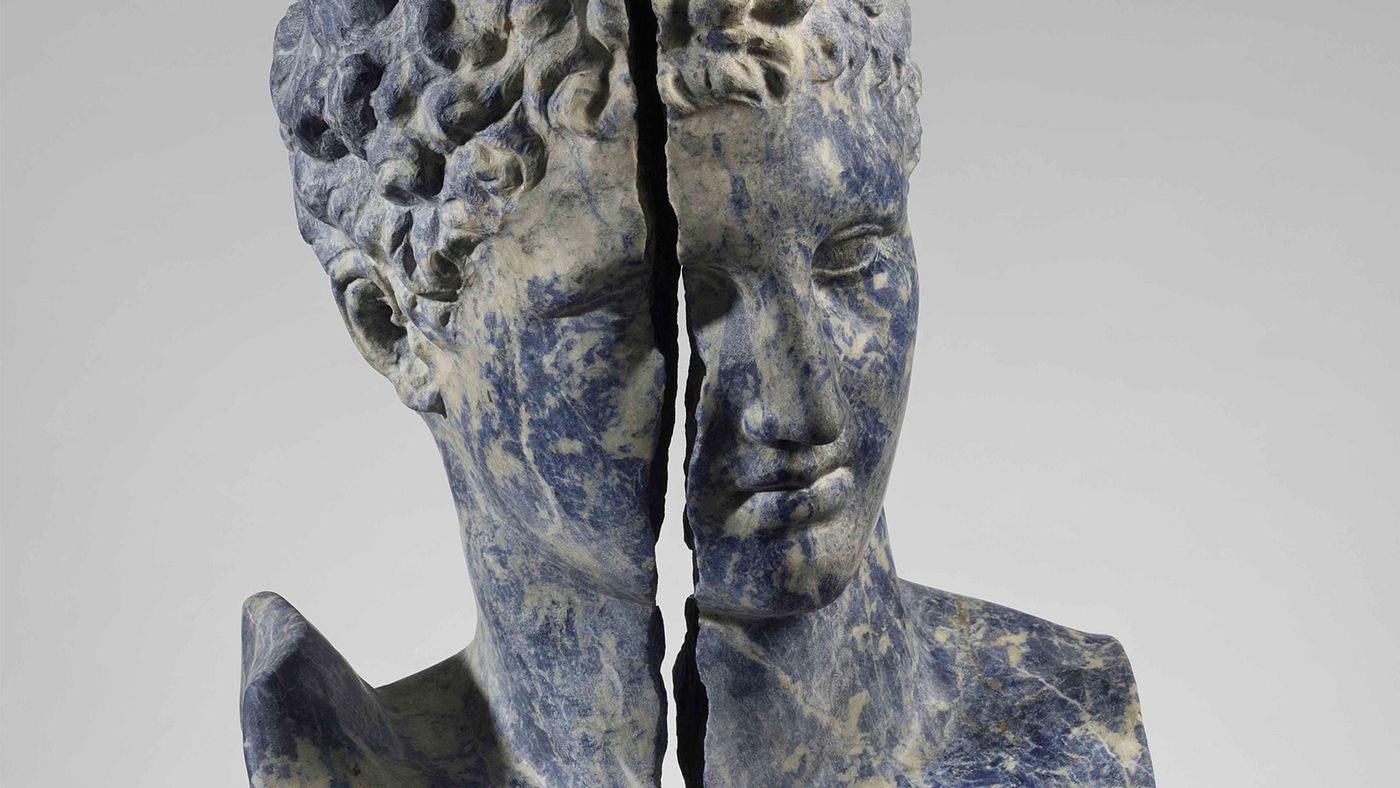
The Perfectly Imperfect Beauty of Massimiliano Pelletti’s Sculptural Figures
Words by Eric David
Location
The Perfectly Imperfect Beauty of Massimiliano Pelletti’s Sculptural Figures
Words by Eric David
At first glance, Massimiliano Pelletti’s sculptures seem like antique fragments of classical art, discovered in some excavation or at the bottom of the sea, and exhibited in their weathered state. And yet there is something quite odd about the work of this Italian artist, beginning with the unexpected materials he uses. Look closer at his figures and you will discern crystalline formations sprouting off their fractured sides, festering indentations digging into porous busts and cryptic inlays embellishing bare torsos. Inspired by the classical figures of antiquity and Renaissance that populated his grandfather’s gypsothèque, Pelletti has appropriated their forms to create his own unique version of their idealized beauty by showcasing the imperfections of his primal matter. Working in his studio in Pietrasanta, Italy, and using a palette of unconventional and exotic minerals such as white and caramel onyx, quartz geode, blue sodalite, and green malachite, in combination with more classical materials like marble, bronze and stone, Pelletti imbues his sculptures with a mythical quality that defies age and provenance. Yatzer caught up with Pelletti to chat about his work and inspiration.
(Answers have been edited for brevity.)
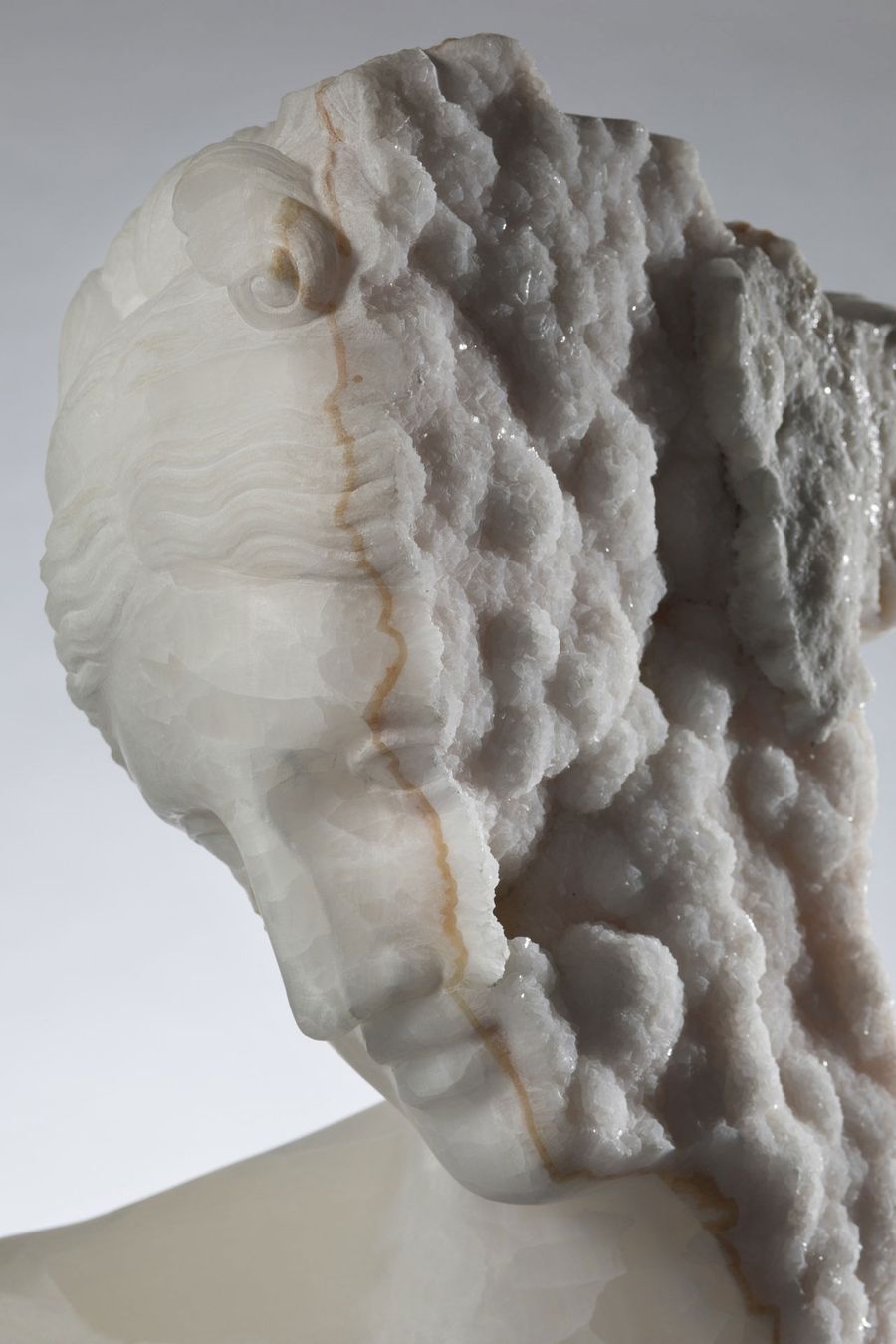
Massimiliano Pelletti, Crystal Venus, 2017. Mexican onyx madre cava. 72 x 75 x 38 cm.

Massimiliano Pelletti, Broken Blue, 2017. Bolivian sodalite, 56 x 41 x 35 cm.
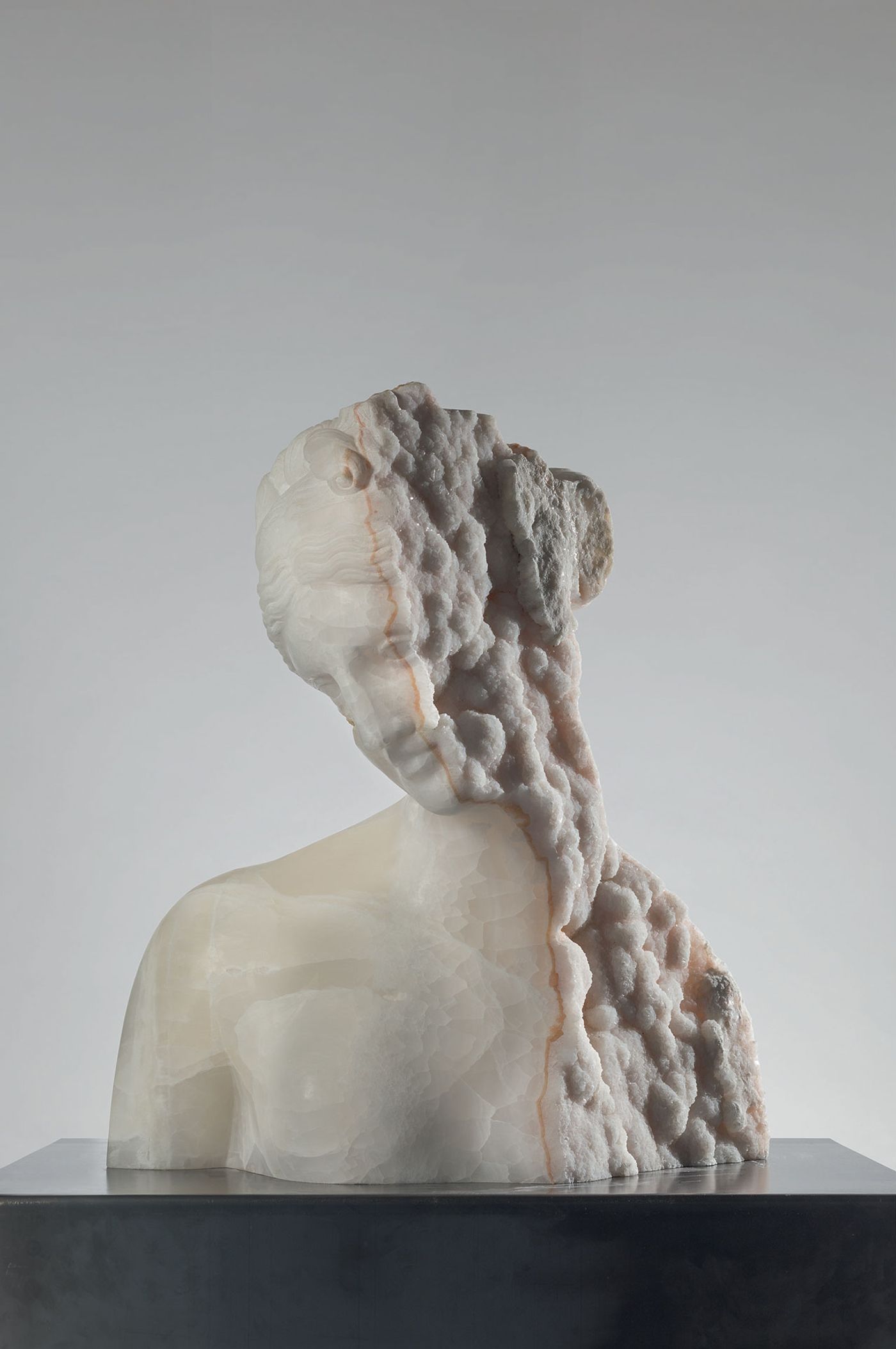
Massimiliano Pelletti, Crystal Venus, 2017. Mexican onyx madre cava. 72 x 75 x 38 cm.
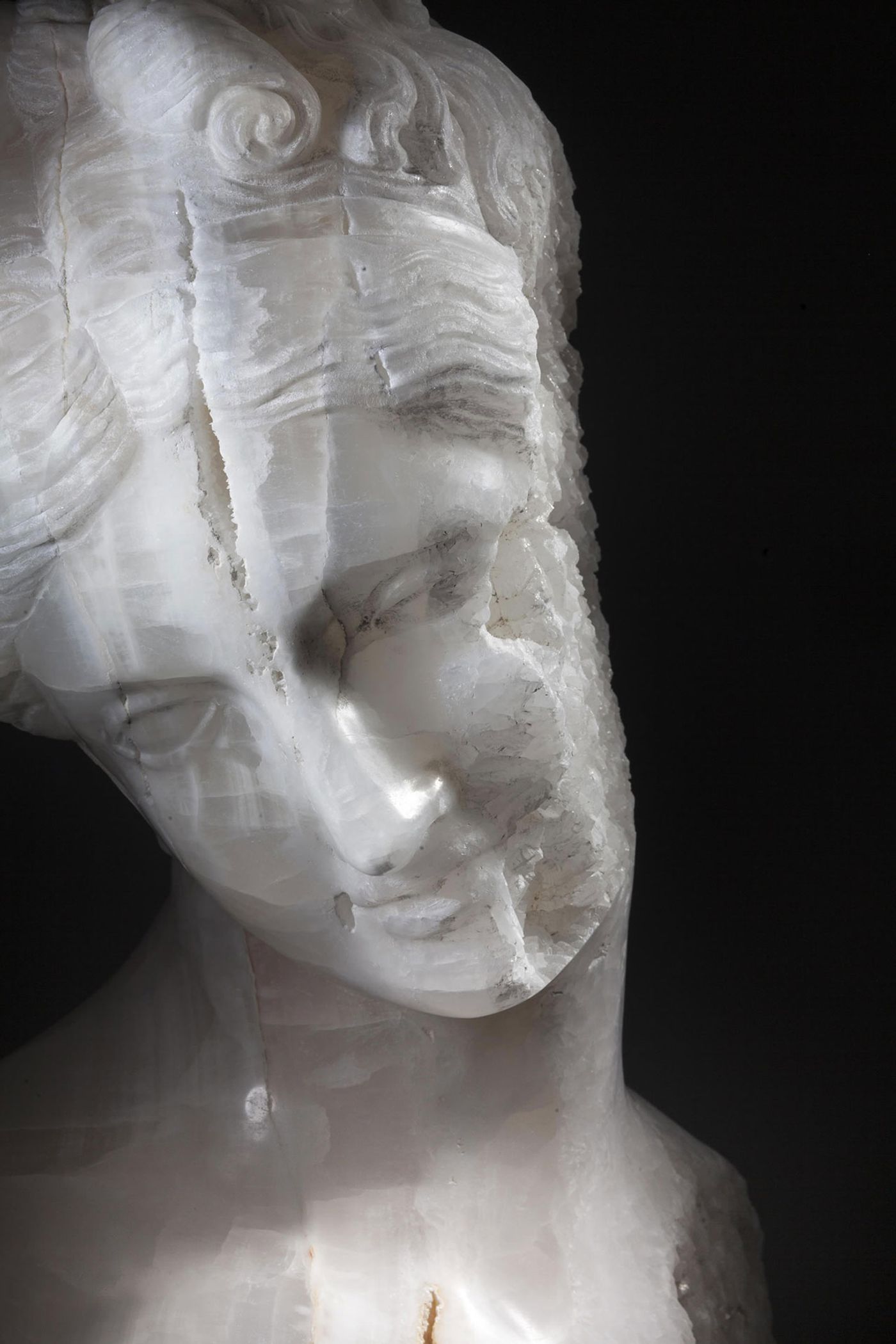
Massimiliano Pelletti, Crystal Venus, 2017. Mexican onyx madre cava. 72 x 75 x 38 cm.
What is the inspiration behind your work? How did you start using classical figures for your sculptures?I
am inspired by the observation of classical sculpture, my personal interest in archaeology and the use of materials that have never been used for the sculptures.The classic figures are “models” of the gypsothèque that years ago belonged to my grandfather, who was a sculptor too, which I inherited and am now reinterpreting in my own way.
What are your criteria for selecting the antique sculptures that your work is based on? Are they aesthetic, historical or is there also some personal connection?
My criteria are both aesthetic and symbolic. They depend on the type of work I am doing because classicism naturally has its own aesthetic value, but it also has its own intrinsic symbology.
What are the challenges you face in your creative process? How long does it usually take to make a piece from conception to completion?
There are works that need a month, others a year. Sculpting is a long process during which many factors (mood, new ideas, the materials themselves) can affect the work in progress. That’s why the final product is never like the initial idea.
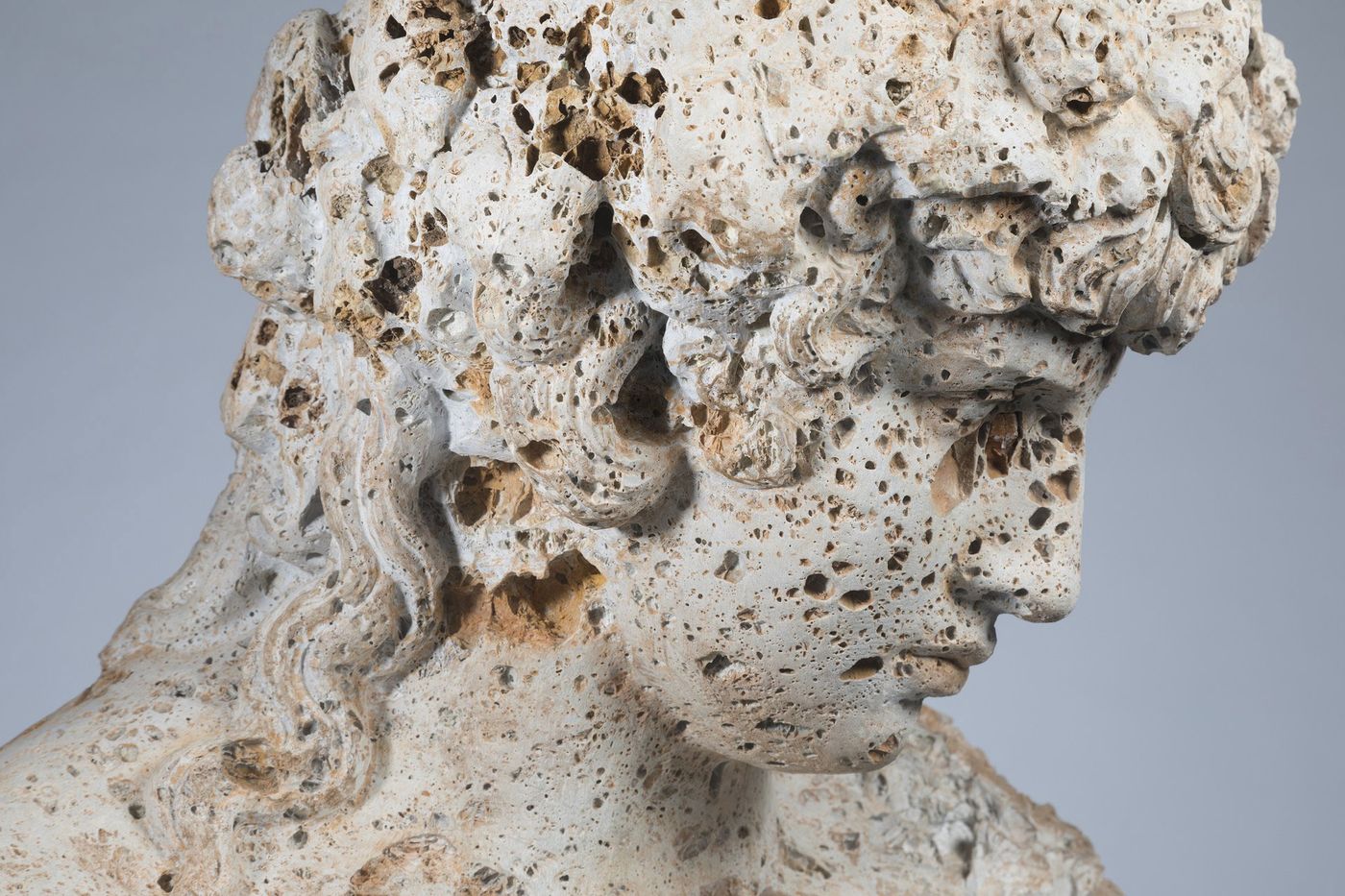
Massimiliano Pelletti, Fallen Dioniso, 2017. Calcare grottoso, 59 x 52 x 35 cm.
How do you choose the materials you use for each work? Is there a conceptual aspect to their selection and the combinations you make?
Of course there is a conceptual aspect in the selection because - for each project - I want the material to bring its own content. So I choose the type of material for each sculpture very carefully.
Your work seems to intentionally eschew the concept of perfection, preferring instead to celebrate its imperfections like cracks, erosion and rough edges. Why is that? Is this a reaction against the artistic canon of western art and the idealized versions of beauty that still dominate our culture? Is it a metaphor for the futile quest for perfection in our lives, or simply a matter of personal taste?
I am looking for a perfect aesthetic ideal. In my opinion the union between the human quest for perfection on the one side and the imperfections that naturally belong to the materials on the other side that can perfectly attain this aesthetic ideal.
Some of your sculptures feature intricate inlays of precious materials that look like emblems or insignia. How do you come up with their design and what is their significance?
Based on the type of project that I am working on, I recreate symbols that make sense in terms of the kind of story I want to tell.
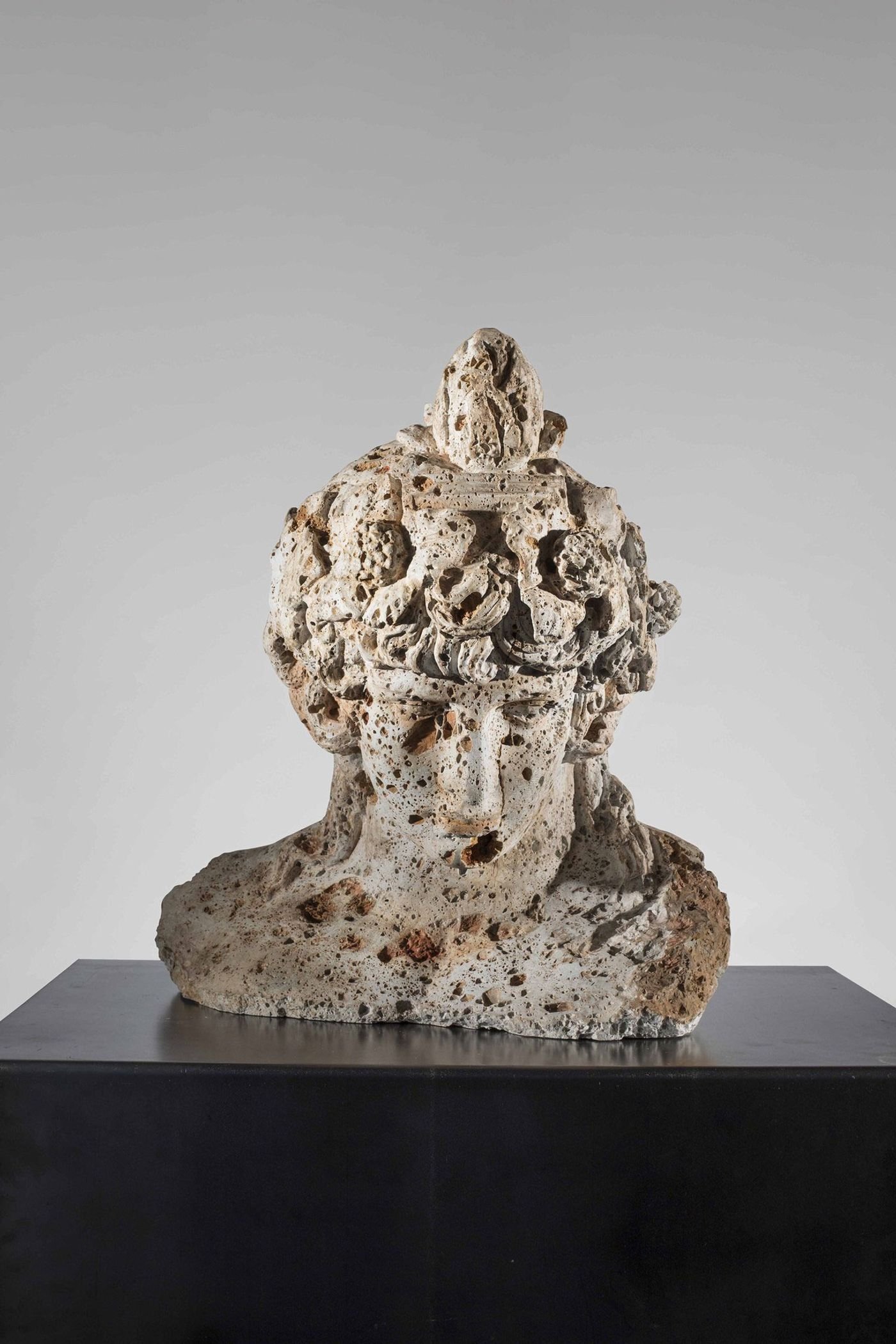
Massimiliano Pelletti, Fallen Dioniso, 2017. Calcare grottoso, 59 x 52 x 35 cm.
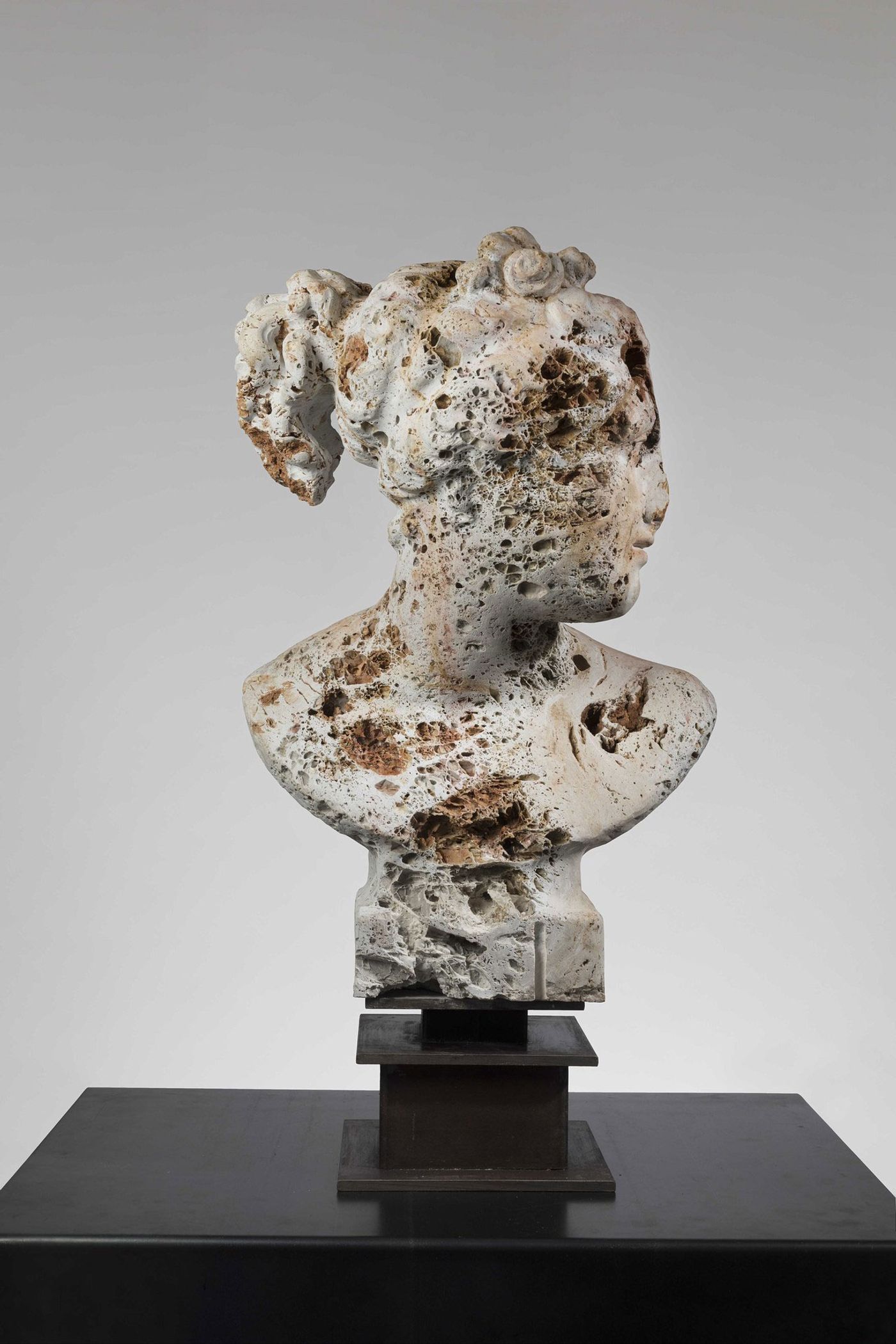
Massimiliano Pelletti, Fallen Beauty, 2016. Calcare grottoso, 87 x 44 x 35 cm.
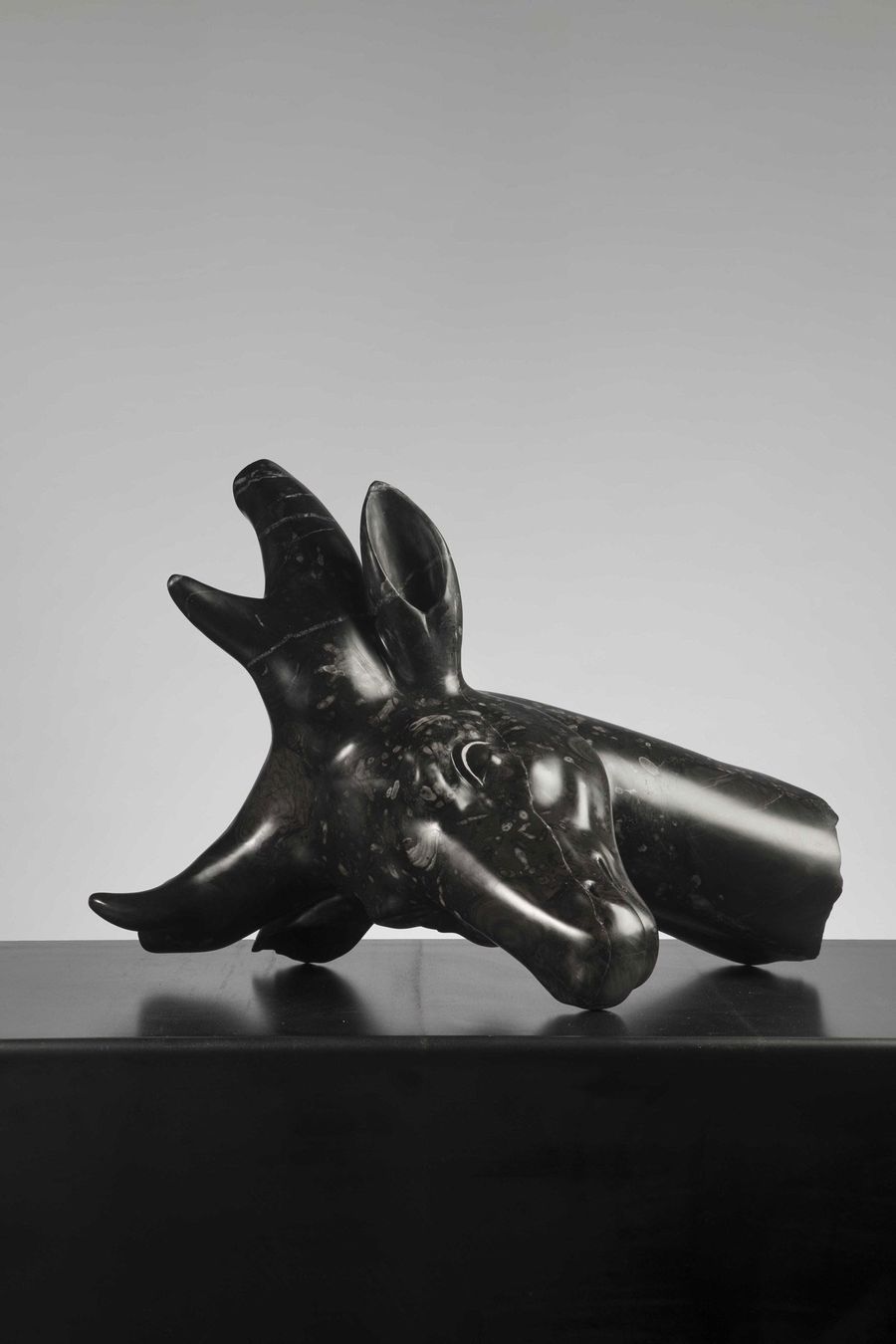
Massimiliano Pelletti, Black Deer, 2017. Black Saint Laurent marble, 39 x 55 x 40 cm.
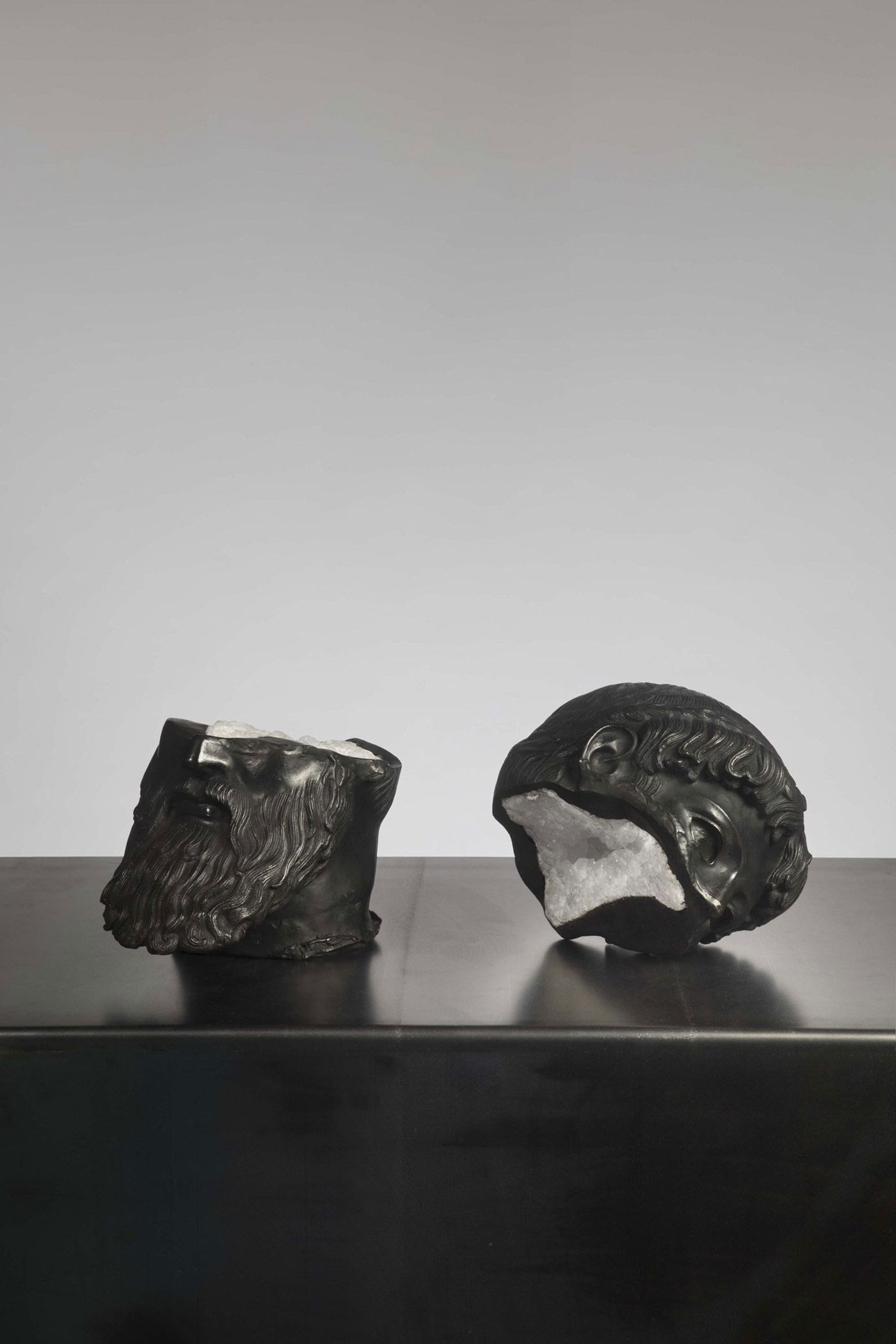
Massimiliano Pelletti, Inside God (Zeus), 2017. Patinated bronze and quartz geode 19 x 20 x 30 cm / 20 x 24 x 16 cm.
Other works feature marine fossils or corals giving the impression that the sculptures were found underwater. Why did you choose to use marine elements?
These works are part of a project based on the iconography of Neptune and the myth of Atlantis, both relating to the sea. So I decided to inlay corals and fossils because, as I mentioned before, they make sense with the kind of story I want to tell.
Which artists have inspired you as an artist?
Foremost my inspiration comes from growing up in the midst of the sculptures in the workshop of my grandfather. Other very important sources of inspiration come from my passion for archaeology, geology and philosophy.
What are you working on right now?
I am currently working on two projects: the first concerning a number of sculptures for a show in a prestigious Italian museum; the second is a monumental sculpture which has been commissioned for a seaside town.
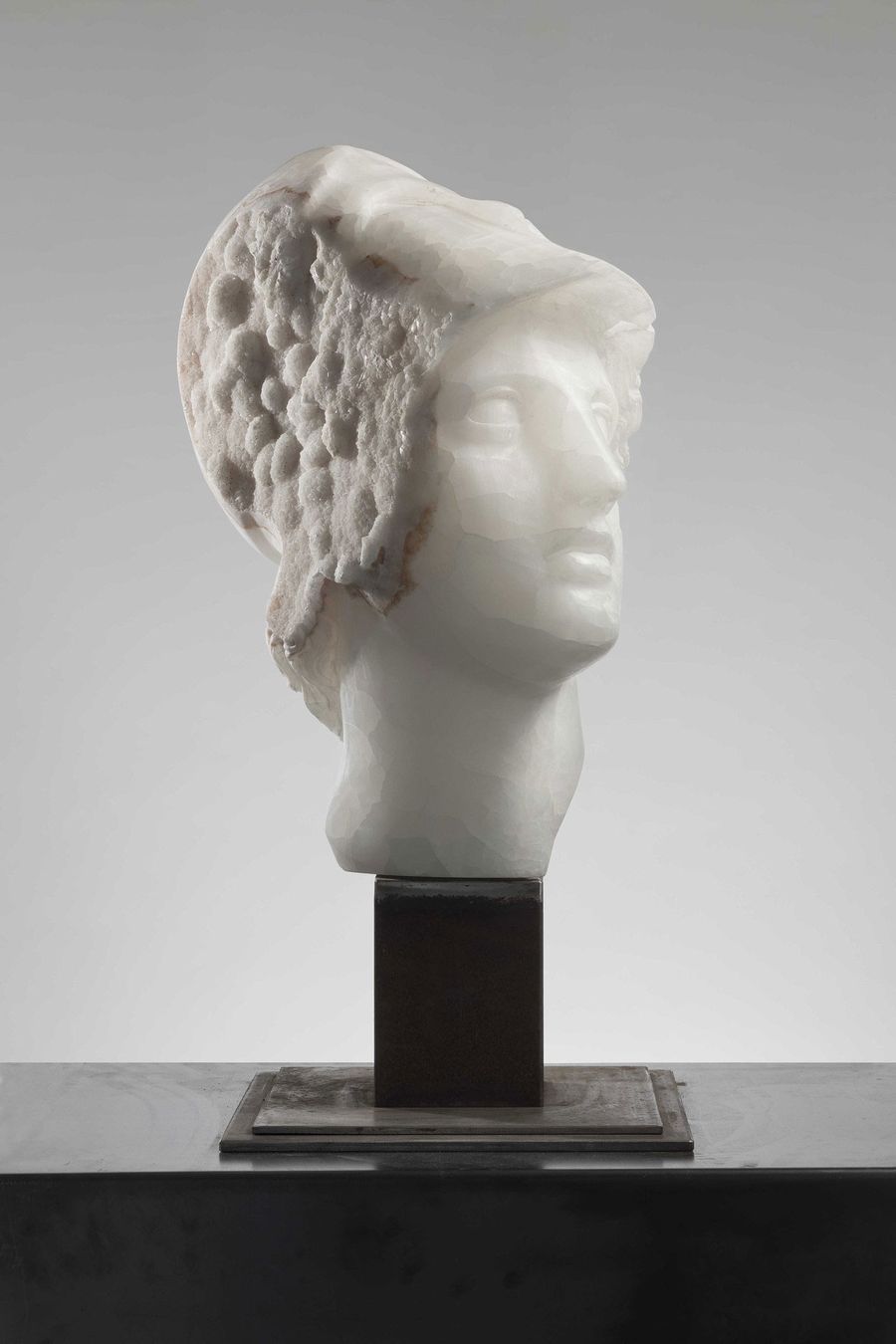
Massimiliano Pelletti, Crystal Dea, 2017. Mexican onyx madre cava, 90 x 40 x 60 cm.

Massimiliano Pelletti, Impossible Love, 2017. Calcare grottoso, 105 x 64 x 35 cm.
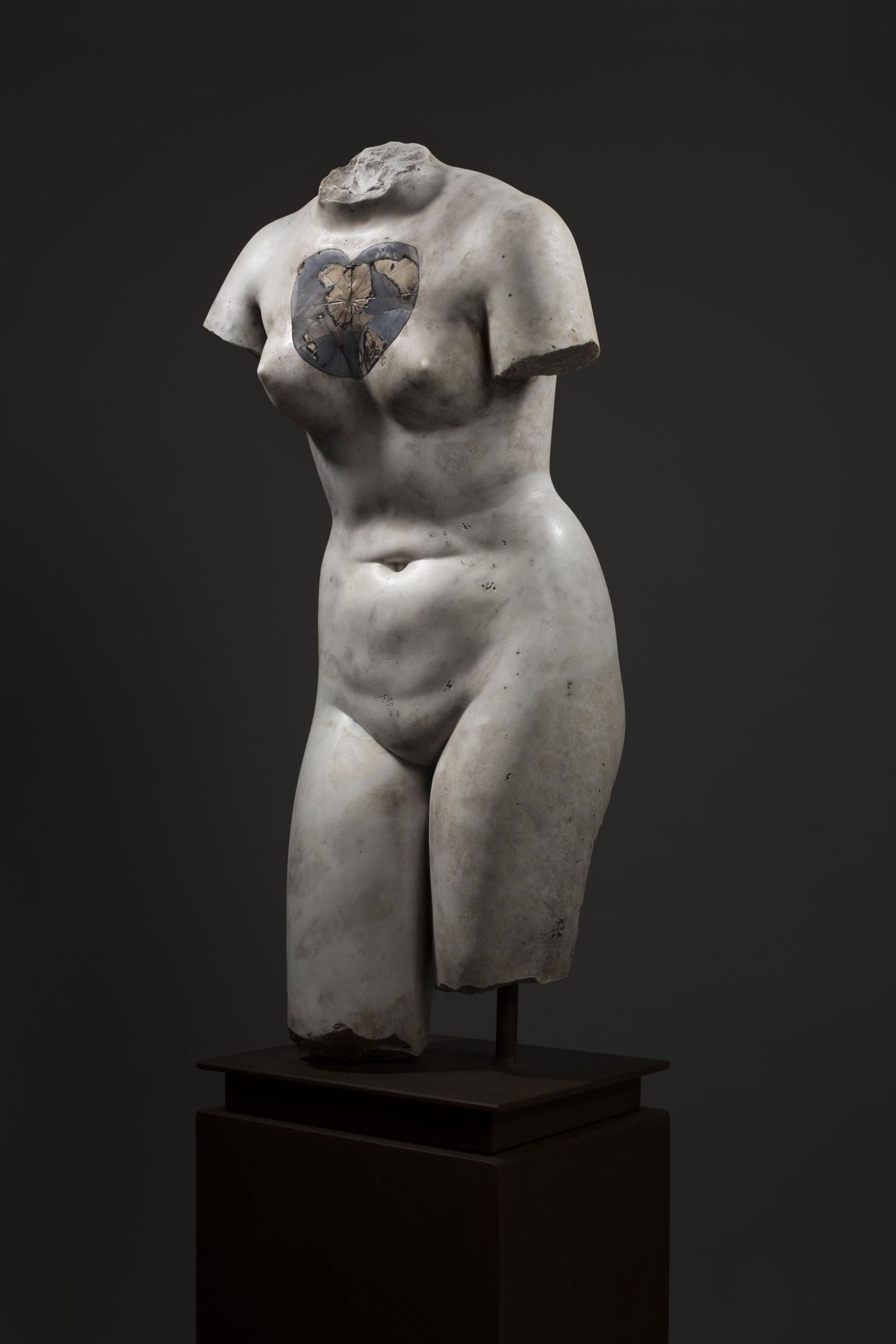
Massimiliano Pelletti, Atlantis (venus), 2017. Statuary marble inlaid with polychrome marbles (map of Atlantis), 45x34x150h cm.
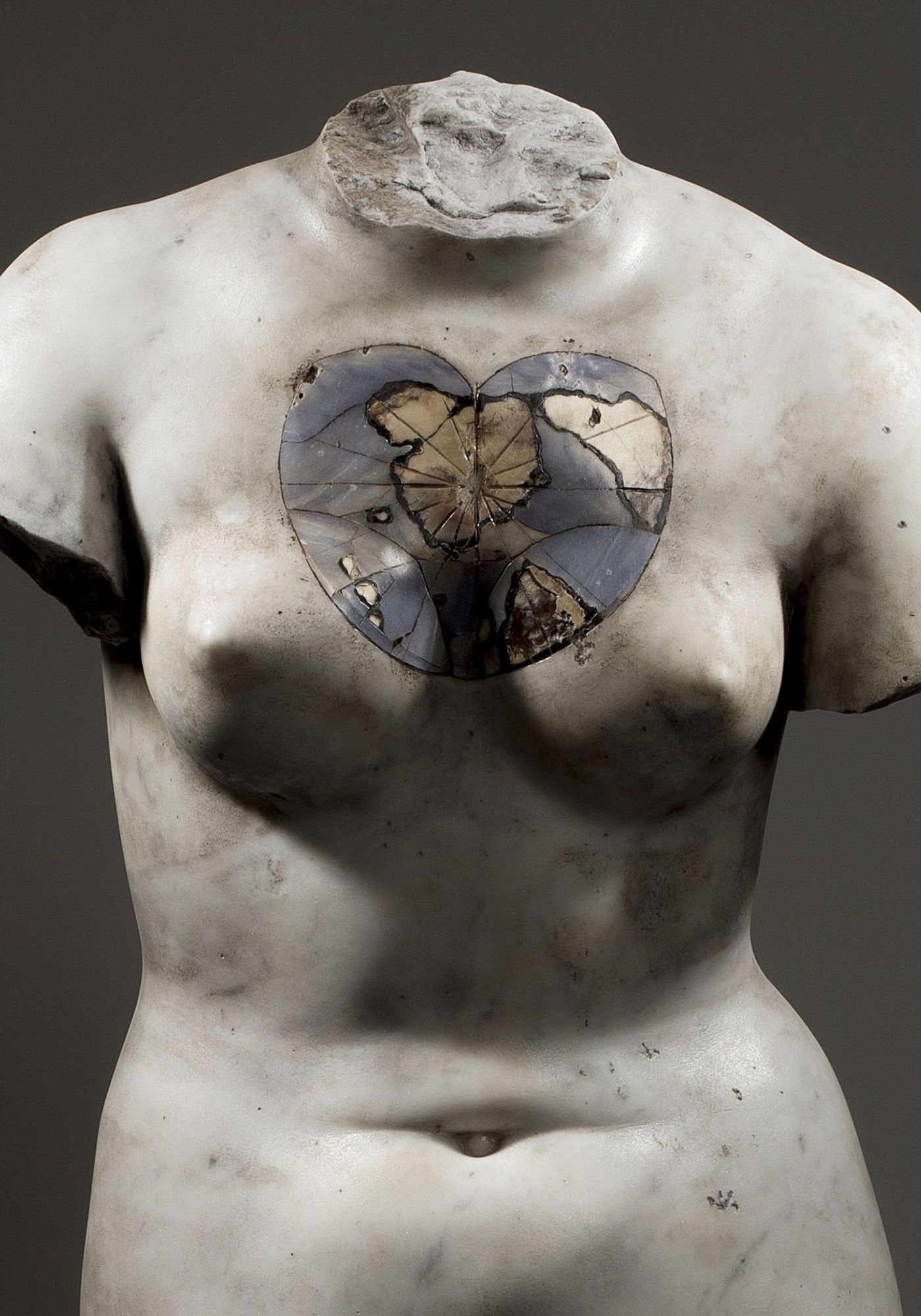
Massimiliano Pelletti, Atlantis (venus), 2017. Statuary marble inlaid with polychrome marbles (map of Atlantis), 45x34x150h cm.
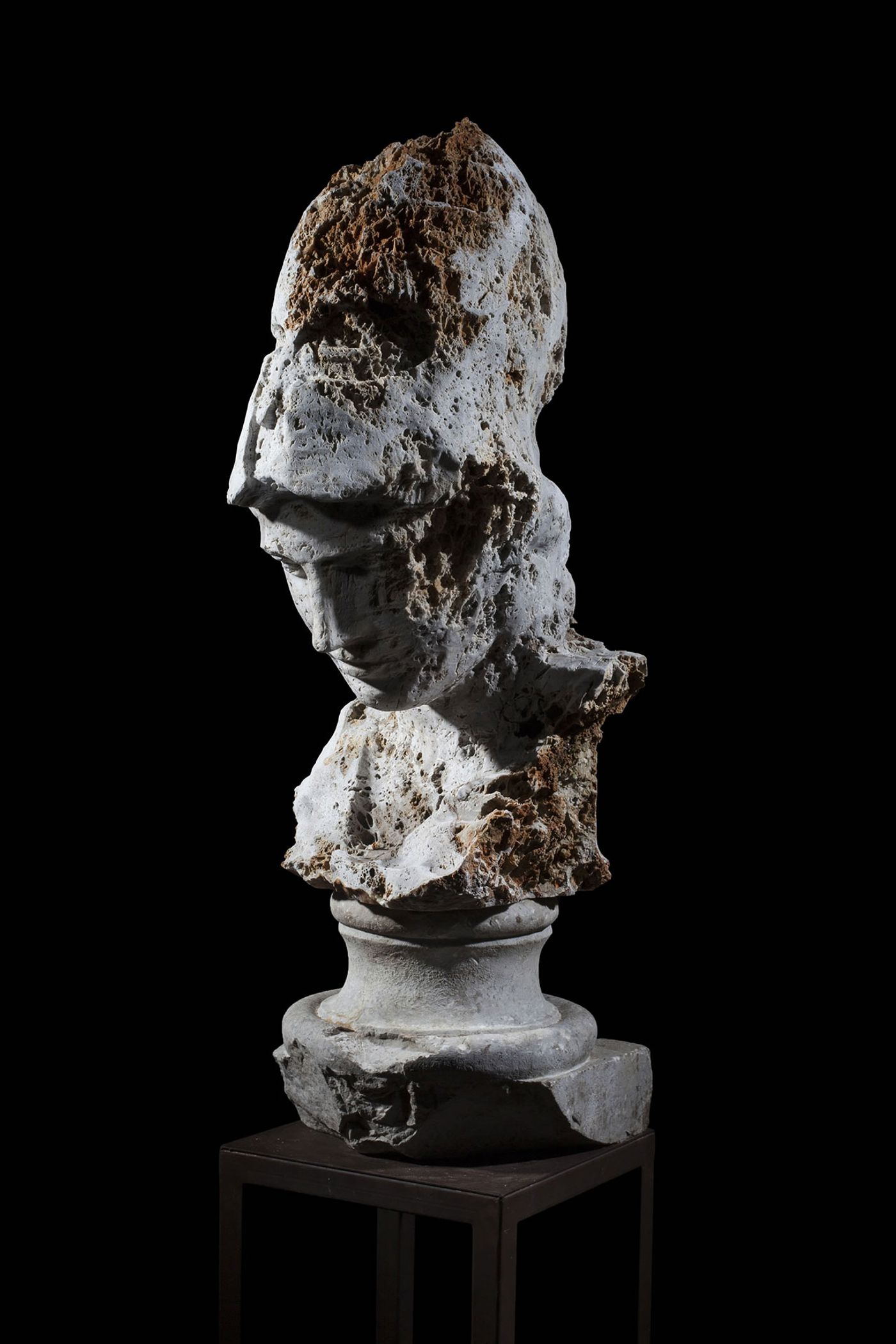
Massimiliano Pelletti, Atena, 2016. Rough stone and blu marble, 34 x 45 x 75h cm.
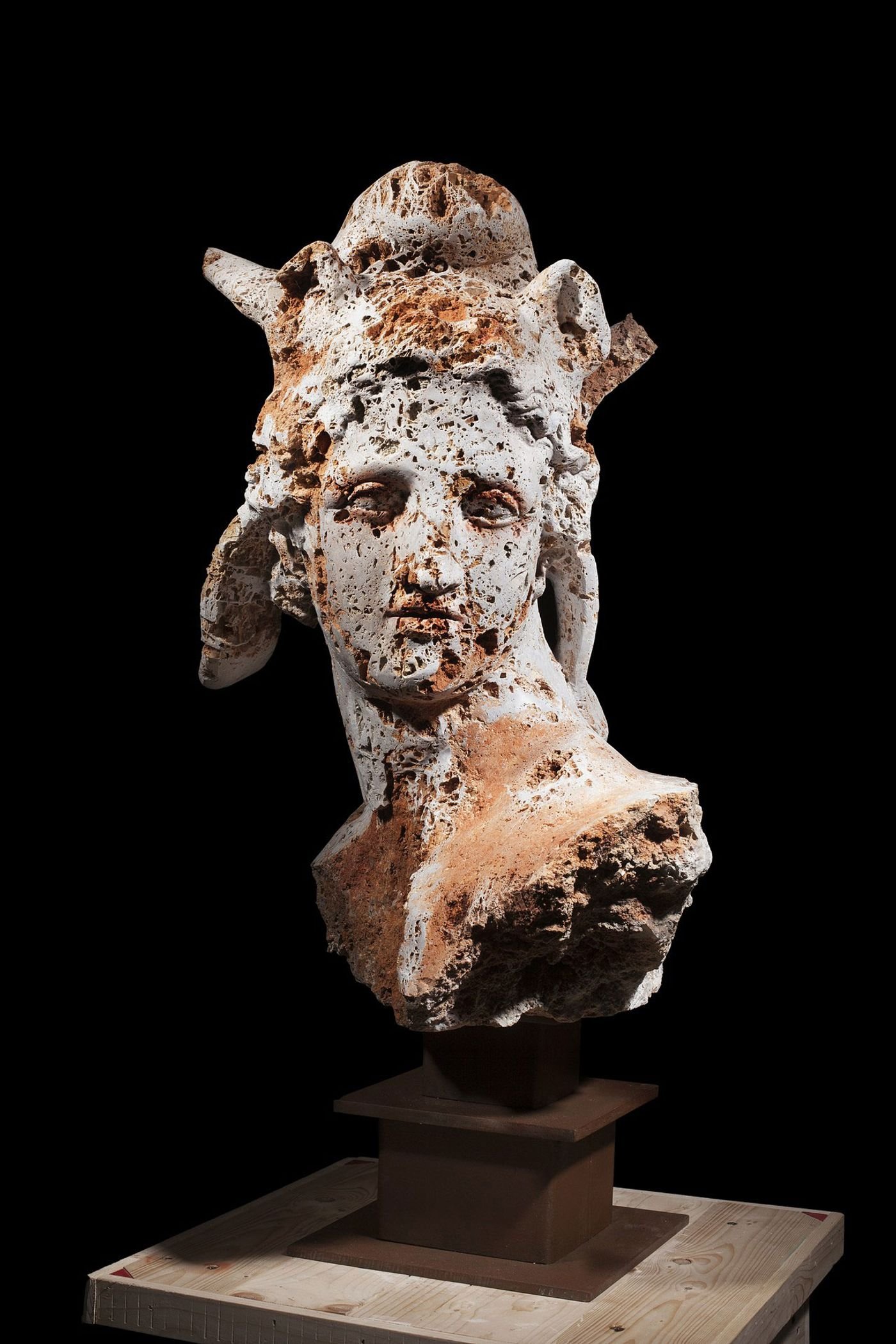
Massimiliano Pelletti, Perseus, 2016. Rough stone, 47 x 50 x 95h cm.
